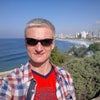Jaffa, a harshen Hebrew Yafo, da larabci Yaffa |يَافَا , wasu na kiransa da Japho ko kuma Joppa), itace dadaddiyar garin dake kudancin bangaren da ayanzu yazama Tel Abib-Yafo, tsohuwar birnin tashar ruwa ce na Isra'ila. Jaffa tayi suna ne tareda kasancewar anan ne labarun Jonah, Annabi Suleiman da Saint Peter na cikin baibul da kuma labarin da aka kaga na Andromeda da Perseus suka samo asali, sannan kuma a yanzu garin yayi suna ne, sanadiyar ire iren nau'ukan lemun dasuke nomawa, wadanda ake kira da for its Lemun Jaffa.
Ansamu ambaton sunan garin a wasu littafan da suka fito daga Egyptian da kuma Amarna letters a matsayin Yapu. Cewar an sanya wa garin sunan ne saboda Yafet, wanda daya ne daga cikin yayan Annabi Noah, Wanda kuma shine yasake Gina garin bayan the one who built it after the Flood. The Hellenist na danganta sunan da sunan Iopeia, ko Cassiopeia, Mahaifiyar Andromeda. Inda ake fashion duwatsu dake kusa da harbor yashara ne a matsayin inda Perseus ya ceci Andromeda. Pliny the Elder danuwansa babba yadanganta sunan da Iopa, yarinyar Aeolus, ubangijin Iska a cewarsu. Dan Palestinian geographer al-Muqaddasi yane danganta garin da Yaffa.
Tsohon garin Jaffa an gina ta ne akan wani tsauni tareda samun daman gabar tekun garin sosai dan wani dama na tsaron soji a tarihin Kasar. Labarin tell of Jaffa, da aka kirkira ta hanyar tara duwatsu da kasa a karnoni da dama, yasa tsaunin karin tsawo sosai.
Archaeological yanuna cewar inda garin Jaffa yake antaba zama a wurin tun a karni na 7500 BCE.
Harbourn Asali na Jaffa ana amfani dashi tun a Zamanin Tagulla.
Birnin an kirkire shine a kusan 1800 BCE.
An samu sunan garin Jaffa garin ne a Dadaddiyar Egypt tun a kusan 1440 BCE. Labarin daya shahara akan the Taking of Joppa ya tabbatar da kwace garin da Pharaoh Thutmose III yayi, whose general, Djehuty sun boye sojojin Egypt a buhun huna Wanda carried by pack animals sannan aka aika dasu camouflaged a matsayin tribute zuwa cikin birnin Canaan, anan ne sojojin suka fito suka kwace garin. Labarun ya zone kafin labarin Homeric story of the Dawakan Trojan a Karni biyu.
Kuma ankara samunsa a Amarna letters da sunan da misrawa ke kiransa wato Ya-Pho, ( Ya-Pu, EA 296, l.33). Birnin na karkashin mulkin Egypt ne harsai a 800 BCE.
Jaffa an ambace ta sai hudu a cikin littafin Hebrew Bible, amatsayin wani birni dake kallon Hebrew Tribe of Dan (Bibleref2|Joshua 19:46), a matsayin tashar shiga na cedars of Lebanon na Solomon's Temple (Bibleref2|2 Chronicles 2:16), a matsayin wurin da annabi Jonah embarked dan Tarshish (Bibleref2|Jonah 1:3) da kuma matsayin Tasha dan cedars din Lebanon Dan Second Temple of Jerusalem (Bibleref2|Ezra 3:7).
Jaffa an ambace ta a cikin littafin Book of Joshua a matsayin garin dake iyakar Tribe of Dan, wanda sunansa na zamani yakoma "Gush Dan" for the center of the coastal plain. The tribe of Dan did not manage to dislocate the Philistines from Jaffa, but many descendants of Dan lived along the coast and earned their living from shipmaking and sailing. In the "Song of Deborah" the prophetess asks: "דן למה יגור אוניות": "Why doth Dan dwell in ships?"
Bayan Canaanite da Philistine dominion, King David da dansa King Solomon sun kwace garin Jaffa and used its port to bring the cedars used in the construction of the First Temple from Tyre.
Garin yacigaba da zama a hannun Israelite har bayan rabewar united Kingdom of Israel.
A shekarar 701 BCE, a kwanakin King Hezekiah (חזקיהו), Sennacherib, sarkin Assyria, ya kwace yankin daga Jaffa. Bayan wani lokaci na kwatan Babylonia, karkashin mulkin Persia, Jaffa nada gwamnati ne daga Phoenicians din Tyre.
Mayakan Alexander the Great sun zauna a Jaffa. Sai daga baya tazama tashar Seleucid Empire harsai lokacin da Maccabees (1 Maccabees x.76, xiv.5) suka kwace ta kuma Hasmonean dynasty suka mulki garin.
Lokacin First Jewish–Roman War, ankwace garin Jaffa da kona ta daga Cestius Gallus. Malamin tarihin Roman Jewish Josephus (Jewish War 2.507–509, 3:414–426) yayi rubutu cewa mazauna 8,400 aka kashe a garin. Pirates dasuke aiki a sabon garin sun hadu da fushin Vespasian, wanda ya rushe garin kuma ya gina ganuwa a inda take, dasanya Roman garrison agurin.
The New Testament account of Saint Peter bringing back to life the widow Dorcas (recorded in Acts of the Apostles, , takes place in Jaffa, then called in Greek (Latinized as Joppa). relates that, while Peter was in Jaffa, he had a vision of a large sheet filled with "clean" and "unclean" animals being lowered from heaven, together with a message from the Holy Spirit telling him to accompany several messengers to Cornelius in Caesarea Maritima. Peter retells the story of his vision in , explaining how he had come to preach Christianity to the gentiles.
In Midrash Tanna'im in its chapter Deuteronomy 33:19, reference is made to Jose ben Halafta (2nd century) traveling through Jaffa. Jaffa seems to have attracted serious Jewish scholars in the 4th and 5th century. The Jerusalem Talmud (compiled 4th and 5th century) in Moed Ketan references Rabi Akha bar Khanina of Jaffa; and in Pesachim chapter 1 refers to Rabi Pinchas ben Yair of Jaffa. The Babylonian Talmud (compiled 5th century) in Megillah 16b mentions Rav Adda Demin of Jaffa. Leviticus Rabbah (compiled between 5th and 7th century) mentions Rav Nachman of Jaffa. The Pesikta Rabbati (written in the 9th century) in chapter 17 mentions R. Tanchum of Jaffa.. Several streets and alleys of the Jaffa Flea Market area are named after these scholars.
During the first centuries of Christianity, Jaffa was a fairly unimportant Roman and Byzantine locality, which only in the 5th century became a bishopric. A very small number of its Greek or Latin bishops are known.
In 636 Jaffa was conquered by Arabs. Under Islamic rule, it served as a port of Ramla, then the provincial capital.
Al-Muqaddasi (c. 945/946 - 991) described Yafah as "lying on the sea, is but a small town, although the emporium of Palestine and the port of Ar Ramlah. It is protected by a strong wall with iron gates, and the sea-gates also are of iron. The mosque is pleasant to the eye, and overlooks the sea. The harbour is excellent".
Jaffa was captured in June 1099 during the First Crusade, and was the centre of the County of Jaffa and Ascalon, one of the vassals of the Kingdom of Jerusalem. One of its counts, John of Ibelin, wrote the principal book of the Assizes of the Kingdom of Jerusalem.
Saladin conquered Jaffa in 1187. The city surrendered to King Richard the Lionheart on 10 September 1191, three days after the Battle of Arsuf. Despite efforts by Saladin to reoccupy the city in July 1192 (Battle of Jaffa) the city remained in the hands of the Crusaders. On 2 September 1192, the Treaty of Jaffa was formally signed, guaranteeing a three-year truce between the two armies. Frederick II fortified the castle of Jaffa and had two inscriptions carved into city wall, one Latin and the other Arabic. The inscription, deciphered in 2011, describes him as the "Holy Roman Emperor" and bears the date "1229 of the Incarnation of our Lord Jesus the Messiah." In 1268, Jaffa was conquered by Egyptian Mamluks, led by Baibars.
Abu'l-Fida (1273 – 1331), writing in 1321, described "Yafa, in Filastin" as "a small but very pleasant town lying on the sea-shore. It has a celebrated harbour. The town of Yafa is well fortified. Its markets are much frequented, and many merchants ply their trades here. There is a large harbour frequented by all the ships coming to Filastin, and from it they set sail to all lands. Between it and Ar Ramlah the distance is 6 miles, and it lies west of Ar Ramlah."
The traveller Jean Cotwyk (Cotovicus) described Jaffa as a heap of ruins when he visited in 1598.
In 1515, Jaffa was conquered by the Ottoman sultan Selim I, and in the census of 1596, it appeared located in the nahiya of Ramla in the liwa of Gaza. It had a population of 15 households, all Muslim. They paid a fixed tax rate of 33,3 % on various products; a total of 7,520 akçe.
The 17th century saw the beginning of the re-establishment of churches and hostels for Christian pilgrims en route to Jerusalem and the Galilee. During the 18th century, the coastline around Jaffa was often besieged by pirates and this led to the inhabitants relocating to Ramla and Lod, where they relied on messages from a solitary guard house to inform them when ships were approaching the harbour. The landing of goods and passengers was notoriously difficult and dangerous. Until well into the 20th century, ships had to rely on teams of oarsmen to bring their cargo ashore.
On 7 March 1799 Napoleon captured the town in what became known as the Siege of Jaffa, ransacked it, and killed scores of local inhabitants as a reaction to his envoys being brutally killed when delivering an ultimatum of surrender. Napoleon ordered the massacre of thousands of Muslim soldiers who were imprisoned having surrendered to the French. Napoleon's deputy commissioner of war Moit described it thus:
Many more died in an epidemic of bubonic plague that broke out soon afterwards. The governor who was appointed after these devastating events, Muhammad Abu-Nabbut, commenced wide-ranging building and restoration work in Jaffa, including the Mahmoudiya Mosque and Sabil Abu Nabbut. During the 1834 Peasants' revolt in Palestine, Jaffa was besieged for forty days by "mountaineers" in revolt against Ibrahim Pasha of Egypt.
Residential life in the city was reestablished in the early 19th century. In 1820, Isaiah Ajiman of Istanbul built a synagogue and hostel for the accommodation of Jews on their way to the holy cities of Jerusalem, Hebron, Tiberias and Safed. This area became known as Dar al-Yehud (Arabic for "the house of the Jews"); and was the basis of the Jewish community in Jaffa. The appointment of Mahmud Aja as Ottoman governor marked the beginning of a period of stability and growth for the city, interrupted by the 1832 conquest of the city by Muhammad Ali of Egypt.
By 1839, at least 153 Sephardi Jews were living in Jaffa. The community was served for fifty years by Rabbi Yehuda HaLevi miRagusa. In the early 1850s, HaLevi leased an orchard to Clorinda S. Minor, founder of a Christian messianic community that established Mount Hope, a farming initiative to encourage local Jews to learn manual trades, which the Messianics did in order to pave wave for the Second Coming of Jesus. In 1855, the British Jewish philanthropist Moses Montefiore bought the orchard from HaLevi, although Minor continued to manage it.






